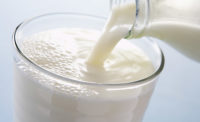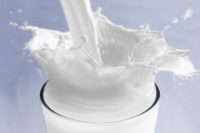Milk’s role in fueling sports performance is becoming mainstream among athletes and those who advise them — from the L.A. Lakers to Cornell University. Finding the right foods and beverages is essential for athletes as well as physically active individuals.
Milk and milk products offer benefits to elite athletes and fitness enthusiasts, whether they are runners, football players, student athletes or distance walkers. From the daily training diet to refueling and recovery following exercise, there are a number of business opportunities for milk and milk products at the training table.
Food fuels fitness
Leading health and wellness organizations recognize the body of science supporting the role of nutrition in fueling activity and promoting recovery after exercise. Protein, carbohydrates, fluids and electrolytes are needed to help ensure athletes and active adults can continue to train and perform at their best. This becomes even more important for those who participate in multiple bouts of training or competition per day (e.g., weekend soccer tournaments or preseason two-a-day football practices).
Food sources of protein, carbohydrates and key vitamins and minerals are vital not only for professional athletes, but also dedicated fitness enthusiasts. Recovery nutrition focuses on meeting the three R’s: Rebuild, Refuel and Rehydrate. Specifically:
- Rebuilding/repairing the exercised muscle with protein;
- Refueling with carbohydrates to help replace glycogen, the stored form of carbohydrate in muscles and the liver that is used up during endurance exercise; and
- Rehydration to replenish fluids and minerals lost as a result of sweating during exercise to help cardiovascular and thermoregulatory systems respond appropriately to exercise.
Because of milk and flavored milk’s nutritional package, they’re a one-stop-shop for providing all three of the R’s of recovery.
Promote protein to consumers
Research shows that 36% of exercisers say they look for products that contain protein, and nearly a third of these active consumers would pay more for a product with added protein. A higher-protein diet, including dairy protein, offers many benefits for people engaged in sports and fitness, especially competitive athletes. As we have shared in past articles, scientific evidence supports the role of dairy protein after exercise to help with muscle recovery. So start by highlighting the protein in your dairy product, followed by dairy’s other benefits to sports performance to reach sports-minded consumers.
Hydration hook
Milk also provides fluids and electrolytes that support hydration, but this information is not shared as often by experts or is well-known by athletes. Of note, a recently published study (Volterman KA et al., 2014) in children and adolescents showed that milk can be as effective at restoring fluid balance following a bout of cycling exercise in the heat as water or a carbohydrate/electrolyte drink. These findings support previous studies performed in adults (Waston P et al., 2008, Shirreffs SM et al. 2007).
This is key because staying properly hydrated is important for the delivery of oxygen and nutrients to exercising muscles and for the dissipation of heat via sweating which helps to regulate body temperature. Dehydration causes body water loss that can negatively affect athletic performance, causing early fatigue and impairing decision making on the field.
Our resident sports nutrition expert Matt Pikosky told us, “I recommend low-fat or fat-free milk as an option not only for the elite athlete and adult exerciser, but also for the student athlete to help replace fluid losses following exercise. It also tastes great and checks all of the key recovery nutrition boxes (i.e., protein, carbohydrates, fluids and electrolytes). Additionally milk’s nine essential nutrients are important for overall health.”
Opportunity for dairy processors
Though numerous sports recovery beverages fill store shelves, chocolate milk naturally provides many of the same recovery benefits. Backed by sound science and a growing market of exercise-conscious consumers, dairy has an opportunity to innovate products to deliver on the needs of aspiring athletes, fitness-enthusiasts and elite athletes.
By communicating that dairy is a source of protein to sports-minded individuals, the industry is opening the door to a business opportunity that elevates the awareness of dairy as a source of nutrition — such as carbohydrates, potassium, sodium, fluids and more — needed for sports performance.
Here’s Pikosky again: “With professional sports as well as collegiate programs spending millions of dollars to maximize their opportunity to fuel athletes, anything that can provide a competitive edge is sought after. Dairy can be part of that equation — get out and capture it!”
Go to usdairy.com for resources, including a protein innovation guide.




